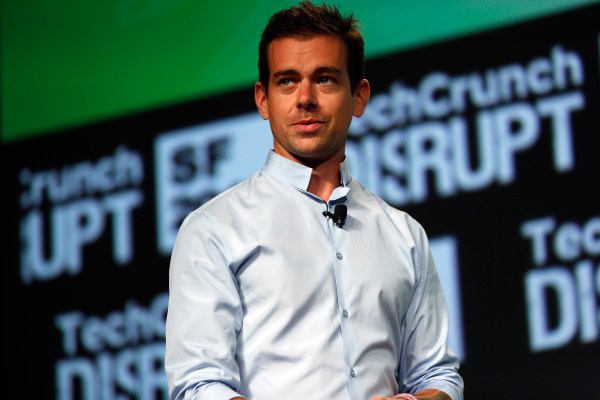Last week, when Twitter’s S-1 filing dropped, the media pored over it with a fine-toothed comb, extracting every bit of juice possible from under the freshly peeled-back rind of the intensely secretive company. One very interesting tidbit was dug up by the Times’ Claire Cain Miller: Twitter co-founder Jack Dorsey had apparently given up the voting rights of his stock to fellow co-founder Ev Williams.
Though the piece discussed the agreement, which assigned a proxy vote to Williams, the truth of the ‘why’ and ‘how’ of this gifting was still a mystery. Until today, when another hot nugget dropped in the form of Nick Bilton’s piece in the Times that takes material from his upcoming book on the company.
If we piece together Miller’s discovery, revelations from Bilton’s piece and some bits and pieces about the comings and goings of Twitter employees, a picture starts to emerge of exactly why and when those votes were removed, making Dorsey Twitter’s ‘silent Chairman’.
The cogs of this particular bit of corporate machinery started turning in 2008, when Williams and board members Bijan Sabet and Fred Wilson expressed concern in Dorsey’s ability to act as Twitter CEO. Push came to shove and, in October of 2008, Dorsey was informed by the pair of board members that he was out as CEO during a meeting at the Clift Hotel in San Francisco.
Octobers have actually shaped up to be no good very bad months for Twitter (and Odeo) founders in general, as October of 2006 is when Odeo co-founder Noah Glass was shown the door. Bilton’s piece points to Dorsey as the catalyst for Glass’ ouster.
The offering from the board? A ‘silent’ Chairman position, which would have no voting shares. Williams would control those shares and take on the CEO role.
A bitter pill, to be sure, but the ‘silent’ part of that position went beyond just voting shares. Dorsey didn’t have day-to-day involvement with the company and was expected to be as literally silenced as he was legally. Instead, according to Bilton, he started myth building. He began to build up his role as a creator of Twitter and started speaking for the company in interviews, ignoring the ‘silent’ part of his ‘silent’ position.
You can see the tension exposed in this clip from an interview on The View. Barbara Walters had spoken to Dorsey the day before the May 6, 2009 interview, and he had given her an interesting version of the creation story, one that excised co-founder Biz Stone and Williams’ contribution (at 3:48):
From what we understand, Wilson and Sabet, both early investors, didn’t want to outright fire Dorsey, for a couple of reasons. Sabet, for one, thought that Dorsey might take his talents over to competitor Facebook. Williams felt there was ‘no way’ that would happen. Of course, if the accounts in the Times piece are correct, Dorsey called Zuckerberg about a potential position the day after he found out he was out as CEO, so those fears were well founded. As far as we know, Bilton’s piece today was actually the first time that many of those involved were aware of that call.
Over the next two years, Williams considered removing Dorsey from the board seat as he continued to trade on his position as co-founder and public figure. But the fear of defection or public embarrassment stymied those plans. Eventually, Dorsey was able to leverage the reputation that he had built in the media to convince many Twitter investors and employees that he needed a day-to-day role, alongside operations manager and then CEO Dick Costolo.
In early October of 2010, Dorsey was able to make good on his efforts and get himself voted in as a no-longer-silent Executive Chairman. That move didn’t get made public until March 28, 2011.
Though the S-1 filing notes that Dorsey’s votes won’t return until the company goes public, he most likely gained that power back once he was voted in as Executive Chairman.
Bilton’s piece paints a very human portrait of the four founders of Twitter: Glass, Dorsey, Williams and Stone. Dorsey, especially, gets his myth dismantled a bit, as the piece slices through the persona that he’s managed to polish over the last few years as the most prominent public face of Twitter and then Square to present — who would have thought — a human being. A human that had cultivated an image of surety that he may not have always felt, a component that is essential to the prototypical Creation Myth.
If you’ve had the opportunity to interact with some of the most incendiary entrepreneurs — whether you consider them successes or failures — they often have this characteristic in common. A need to have their partners and employees simply believe. In the best founders, this is coupled with brilliance of one sort or another, but that doesn’t change the fact that sometimes a myth — no matter how powerful and effective — is just a myth.
No matter how nuanced the reality, the stories that grow out of what we learn of the early days of any company will likely get distilled down into heroes and villains by the nature of the media beast. But the truth is that there’s a bit of each in every founder’s story, and Twitter will have its share.
Bilton’s book, titled “Hatching Twitter: A True Story of Money, Power, Friendship, and Betrayal” should bring some more fascinating details about the company when it arrives next month.
